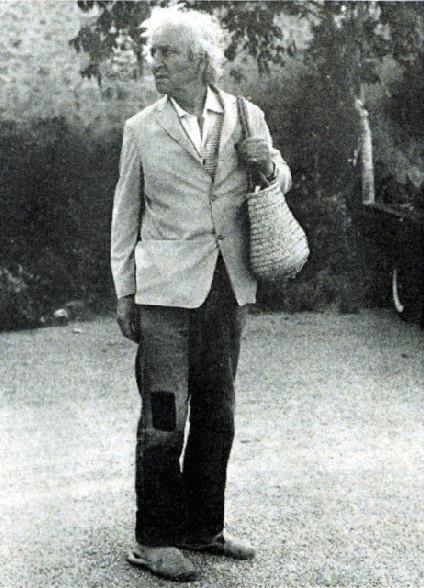Robert Chris Jordan

Robert C. Jordan, or Chris Jordan as we knew him then, came onto the Vancouver classical guitar scene around 1965 and became a familiar face to all those lovers of classical guitar who were around the Mediterranean shop and elsewhere in the city.
He had previously played violin with the Edmonton Symphony Orchestra and was a truly professional musician who had performed widely. He studied guitar with Eduardo Sainz de la Maza in Barcelona and later worked with Julian Bream in Stratford, Ontario.
 Click to listen to Etude No.9 in MIDI format.
Click to listen to Etude No.9 in MIDI format.Sequenced by Dmitri Bachovich
I was interested in his rather unusual right hand finger technique, learned from Sainz de la Maza and so took some lessons with him for a while. He introduced me to the Matteo Carcassi Intermediate Etudes Op.60 arranged by Karl Scheit, which I found to be very good and later passed on to a couple of my own more advanced students.
 The Guitar Player - Joseph De Camp 1908
The Guitar Player - Joseph De Camp 1908Chris Jordan played often at guitar meetings in my old rented house on west 27th Ave. and was one of the founding members of The Vancouver Classical Guitar Society. I remember going with Chris and Bill Lewis in Chris' Volkswagen beetle driving one evening from Vancouver down to Seattle to see a concert by Julian Bream. I believe we drove back to Vancouver again the same night. We were all very enthusiastic...and younger...in those times.
Here is more about Robert Chris Jordan.
Barry Hall

Barry was a popular and talented folk musician who played both guitar and five-string banjo. He was a performer in and around Vancouver who came to teach both guitar and banjo in the Mediterranean shop. As a teenager, he made a record for Folkways Records called The Virtuoso Five-String Banjo.

Here is a clip of Barry performing Little Maggie.
Barry later left the Mediterranean shop to teach in Bill Lewis' Music studio. Here is a writeup from that time.
As far as I know at present, Robert C. Jordan is still teaching classical guitar in Vancouver and Barry Hall is still performing there on the folk music scenario.
I have fond memories of both of them from those past times.
 Les Deux Guitars - Suzanne Delbays
Les Deux Guitars - Suzanne DelbaysContinue on to Chapter 17...... Vancouver Flashback V - Bill Lewis
Go back to Chapter 15......Vancouver Flashback III - Mike Dunn & Ray Nurse
















































